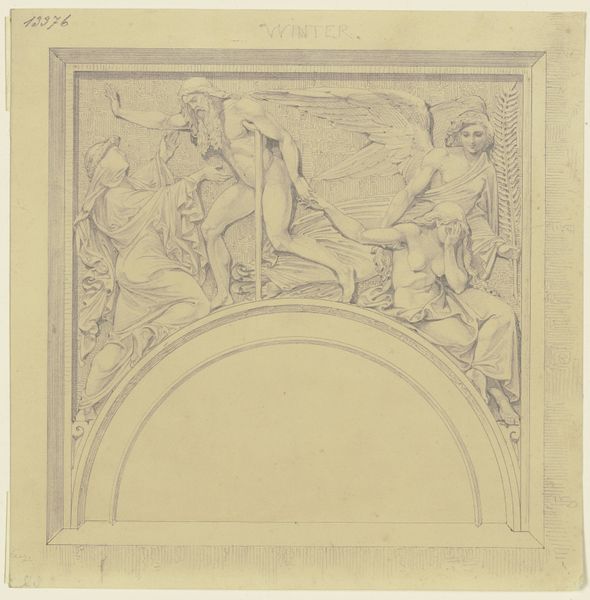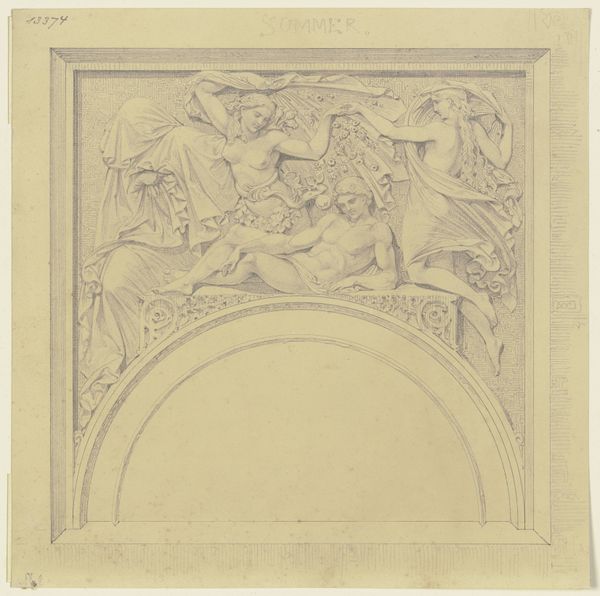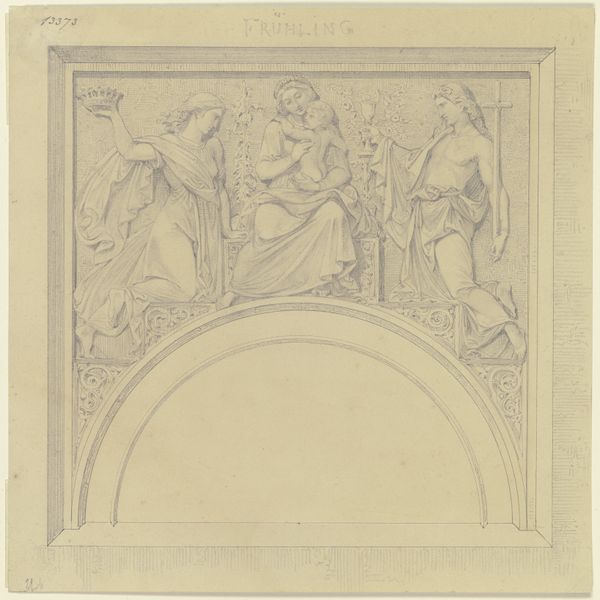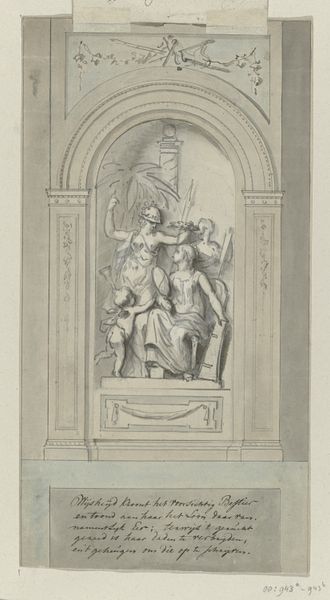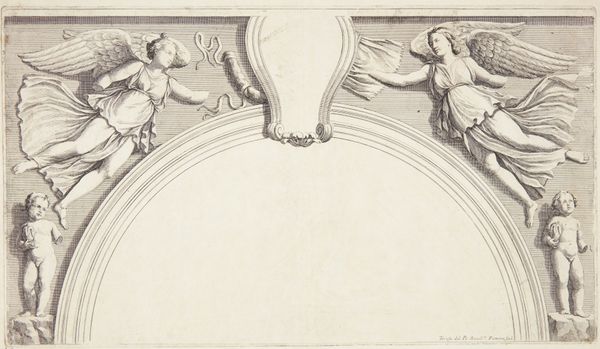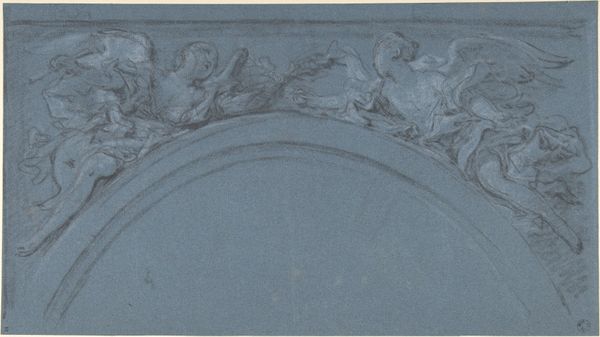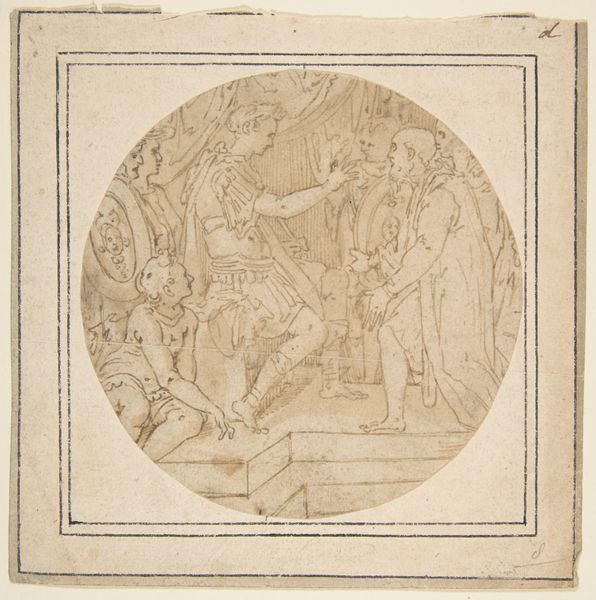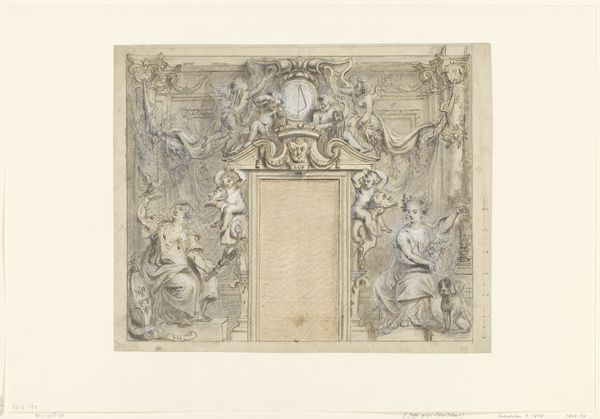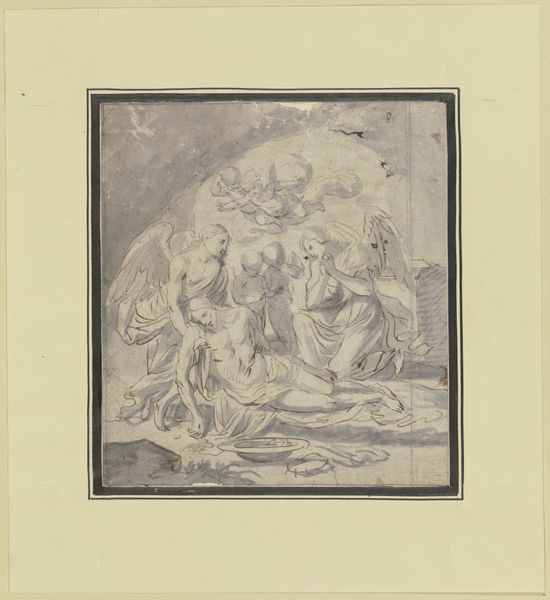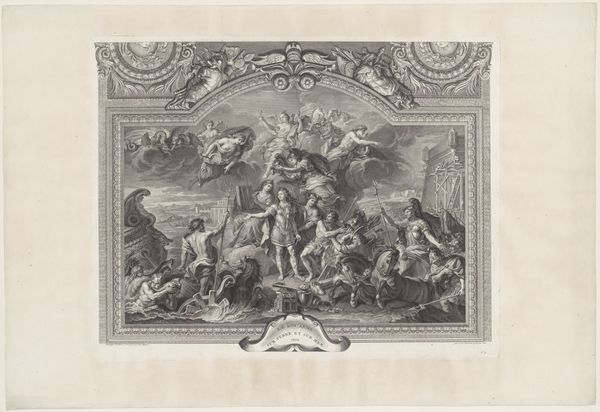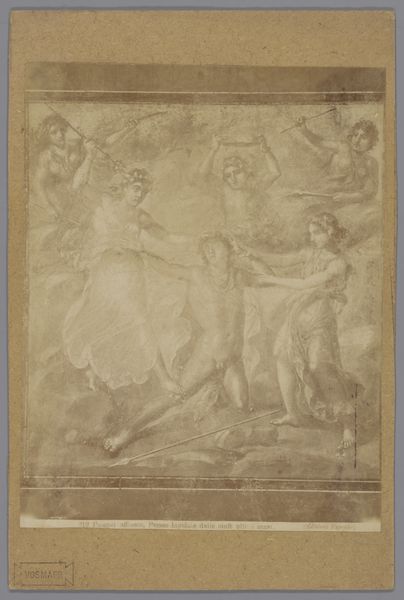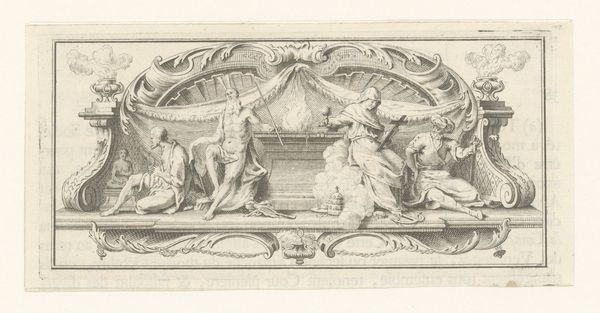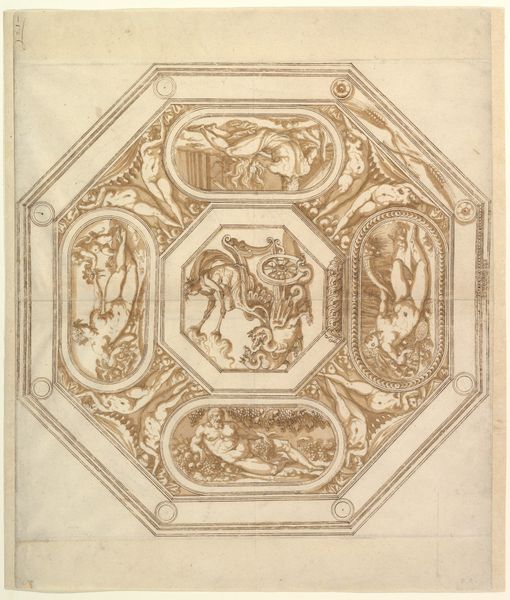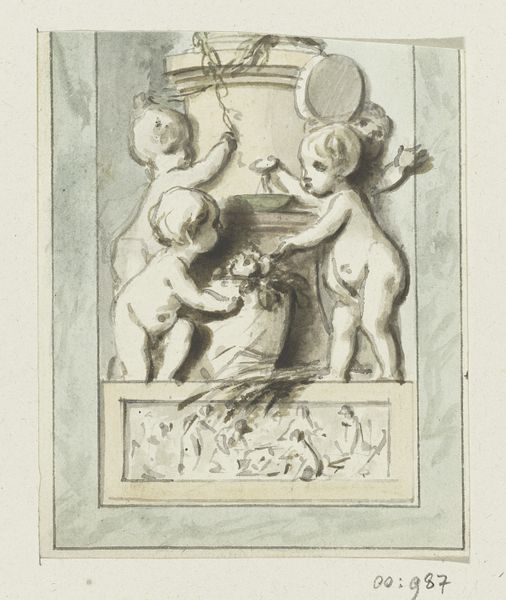
drawing
#
drawing
#
neoclacissism
#
16_19th-century
#
allegory
#
figuration
#
form
#
line
#
academic-art
#
nude
Copyright: Public Domain
Curator: This delicate drawing, rendered in what appears to be graphite, presents a rather classical scene. What strikes you about it initially? Editor: The muted palette certainly creates a somber, contemplative mood. There’s also something stark about the unadorned lines and the figures’ poses. Who is the artist, and can you tell me a bit more about its creation? Curator: This is “The Autumn” by Johann Baptist Scholl the Younger. The piece is held at the Städel Museum. What stands out to me is the almost academic precision of the lines and shading. It has the character of neoclassical art while deploying a very basic medium: drawing. Editor: I'm immediately struck by the allegorical nature of the scene and that central maternal figure, almost like a terrestrial representation of abundance in its most elemental form. What are we meant to gather from her presentation juxtaposed against what is an apparent god, at the far end? Curator: Precisely. This interplay reflects broader societal ideals regarding family, labor, and governance that became popularized through increased exhibition accessibility and educational printmaking trends. Editor: How so? Are you implying it had political functions within society? Curator: In part, yes, to reflect specific social roles and structures and to perpetuate the power dynamics of the period through imagery associated with abundance and idealized mother figure of nurturance for society, as one would care for a young baby as seen here. But its creation involved laborers acquiring materials, skilled draughtsmen replicating classical motifs… consumption. All contribute to art history. Editor: That makes sense. I’d like to understand this work better from the position of gender expectations that society would impose, while viewing it through the structures that allow the drawing to exist within these walls. Curator: And understanding the work means considering how its creation and exhibition contributes to shaping art markets, the taste of collectors, and cultural norms through the politics of display.
Comments
No comments
Be the first to comment and join the conversation on the ultimate creative platform.
